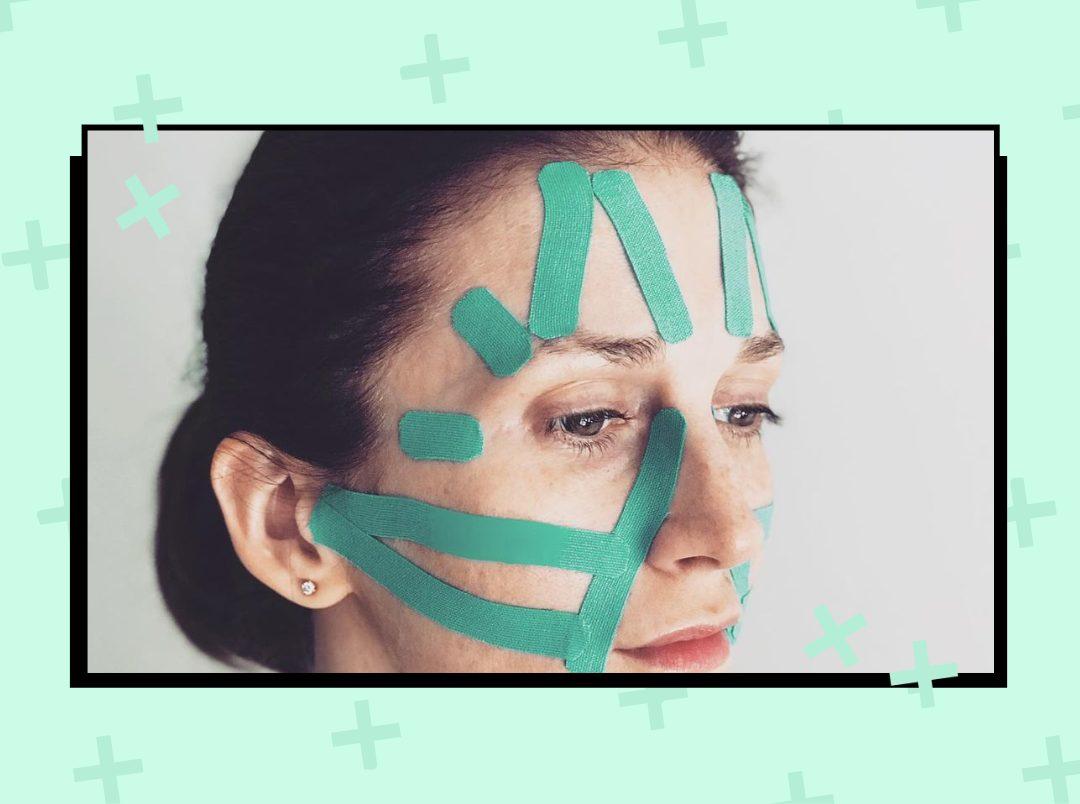The internet is jam-packed with beauty-related hacks—many of which are (very) questionable. You think you’ve seen it all, and the very next second, you find something that catches you off-guard—because you let your naivety convince that you’re prepared for what’s to come (bad idea).
I saw influencers slapping chunks of tape to their faces (forehead, cheek, and every other part of the face that qualified as tapeable)—explaining that the process diminishes lines and wrinkles—or prevents them from deepening—if committed to overnight. While many dermatologists have contested the safety of this trend, many users have accused influencers of editing their videos to make their end-results appear convincing—and some have gone as far as to claim that these influencers were documenting their ‘before-after’ a week prior to their Botox. And that’s why I roped in Dr. Karishma Kagodu, Plastic Surgeon, Founder & Managing Director, Dr Karishma’s Aesthetics and Dr. Shilpi Bhadani, Plastic & Aesthetic Surgeon, Founder, SB Aesthetics, Gurugram, to tell me a little more about this technique from their P.O.V, and whether any one of us should put it to the test (spoiler-alert: please don’t).
Should We Tape Up This Trend, And Put It Away? Or Is It Redeemable?
What is face-taping?
According to Dr. Karishma, “Face-taping is a part of the K-beauty regime like any other ritual involved in K-beauty disciplines— face-taping is a conventional technique meant to reduce facial aging by avoiding the movement of your muscles in a controlled manner. Unfortunately—it has no medical or cosmetic base, and it isn’t medically-proven as effective either. As far as the purpose is concerned, it is about achieving a V-shaped face to the asymmetrical face. I don’t think it is helpful because it can lead to the development of wrinkles and lines.”
“You’ll notice a lot of creators tape their face in different directions to ‘control’ ageing, but science suggests that the benefits of this method as an anti-ageing hack is non-existent,” says Dr. Shilpi.
Is face-taping safe?
“Since the practice of face-taping involves holding your skin down for the night, it can cause more harm than good. It can damage your skin-barrier, and side-effects can manifest as redness, irritation, and acne-related breakouts. I will note that face-taping is not skin-friendly, and this practice has more apparent risks than benefits,” she says. Dr. Shilpi describes this trend as more of a fad that the internet has caught wind of. She gives me a little insight into this technique, “These tapes are widely used in physiotherapy for inhibiting movement across painful (facial) joints, and they have a good success-rate. Even in wound-healing, taping is said to increase blood-supply in the area. Facial Palsy also involves the use of tape—but whether the inclusion of tape is beneficial or not is still being researched.”
Can face-taping actually work?
Dr. Karishma explains, “The idea behind face-taping is that the tape can keep your muscles in place while you sleep, and diminish wrinkles and lines. Ironically enough, it can lead to the development of noticeable lines and wrinkles because your muscles are obstructed from doing what they are supposed to. This results in reverse action with obvious, stronger, and prominent signs of ageing. You might also find that you’re allergic to the tape (the material of the tape). That’s a big no-no if you are planning on trying this out. Face-taping can cause other such side-effects—wounds, active infections, irritation in the taped area, and scrunching of the skin are a few.”
According to Dr. Shilpi, ageing occurs at multiple levels. It goes beyond your skin—it’s not superficial as it affects the bones and tissues too. Plastering an area of the face with tape for a couple of hours can make your skin look lifted temporarily; but this technique has no long-term benefits at all. She reiterated Dr. Karishma’s point about the occurrence of reactions to the tape, and explains that pulling your skin with tape results in more damage than benefit, “You’re stretching and pulling your skin, and this is counter-productive since it can lead to laxity of the skin.”
What are some legitimate, safe ways of reducing the appearance of wrinkles and lines?
“The tried, tested, and medically-proven methods are injectable fillers and facelifts, surgical or non-surgical, as you qualify for the candidacy. In addition, sun protection, skincare rituals followed by toner, moisturiser, sunscreen, and serums are non-negotiables. Remember that adding topical skin-preparations to your routine [containing hyaluronic acid, Vitamin C, Vitamin E, or retinols] help the process. Botox is another alternative if you want to diminish age-related signs more healthily. It helps prevent lines, wrinkles, and sagging; and is the best alternative to face-taping. Even radio-frequency lasers are available for non-surgical skin-tightening—proven to be highly safe and effective. And skin-related treatments like Carbon laser, Q Switch Laser, and CO2 lasers are popular treatments for skin-resurfacing and anti-ageing as well,” says Dr. Karishma.
What are some other trends that you’d advise people to not try?
Dr Shilpi says, “Apart from facial-taping, I’d say that even though facial rollers, massages, and yoga make you feel relaxed and rejuvenated to a certain extent, they don’t have as much value. There’s no science-backed evidence that they thin, slim, or lift your face.”
It’s safe to say that this trend isn’t safe to put to the test. While these no-cost hacks might appeal to you, remember that most of them aren’t expert-approved or science-backed. Always consult a dermatologist before experimenting with your skin, and don’t buy into ‘viral’ hacks because someone in a random comment-section claims that ‘it works wonders’ for them.
Featured Image: Instagram



